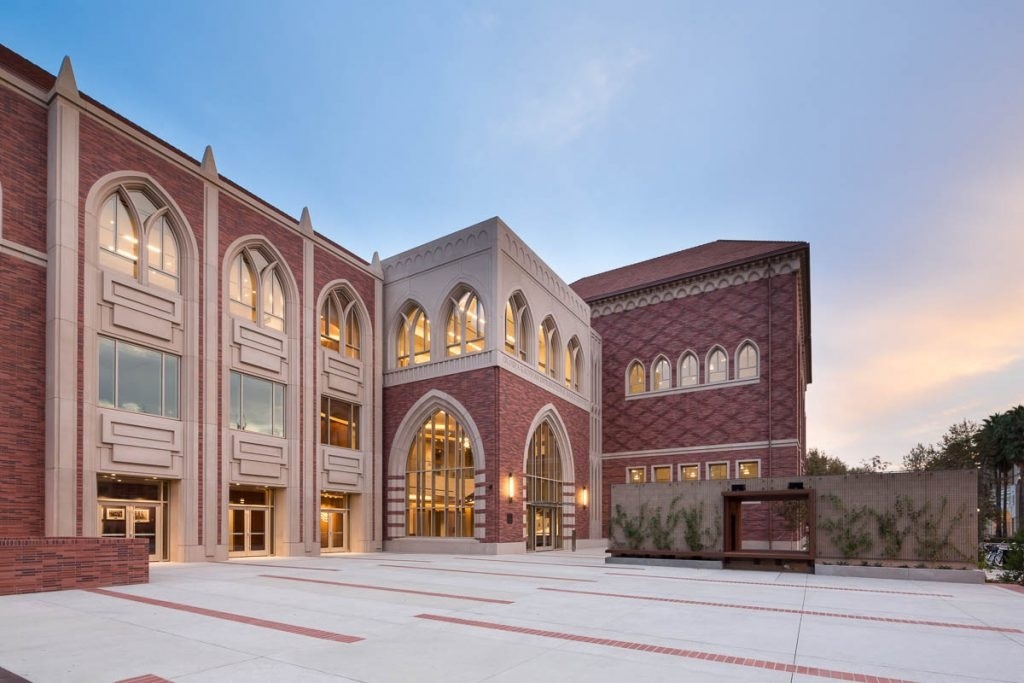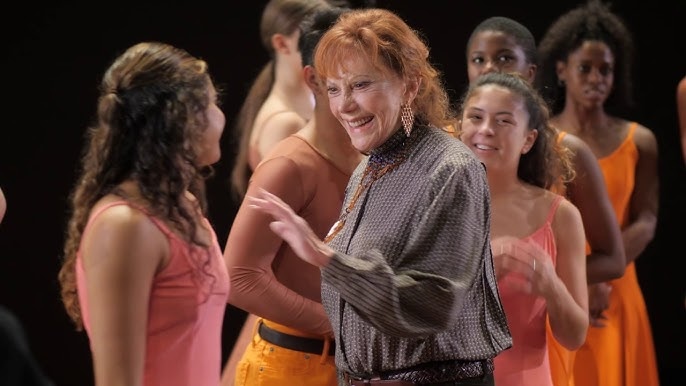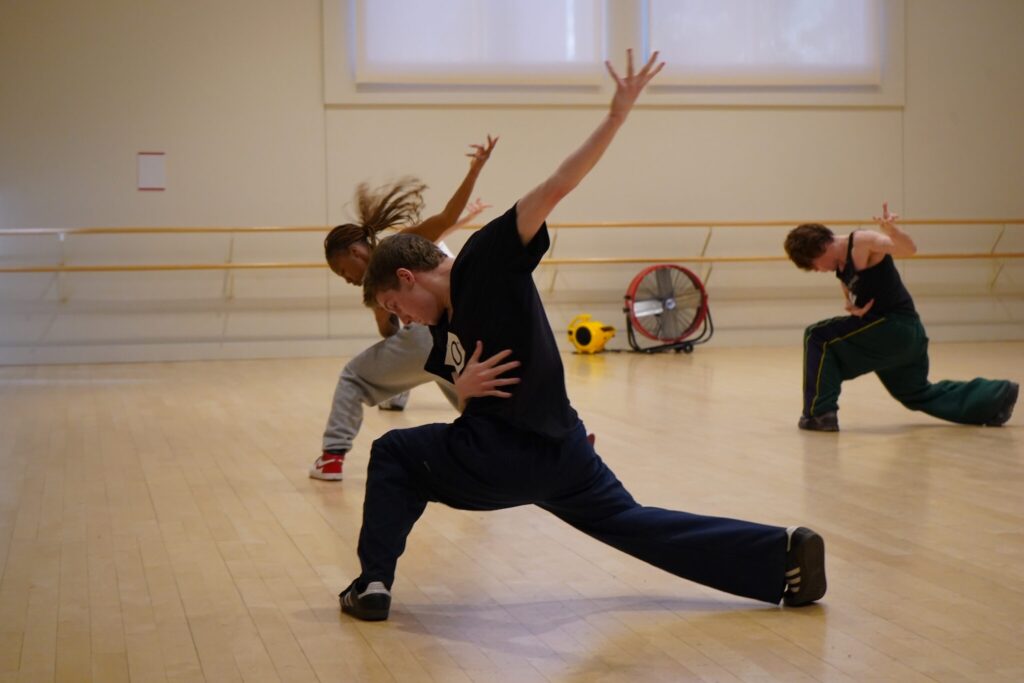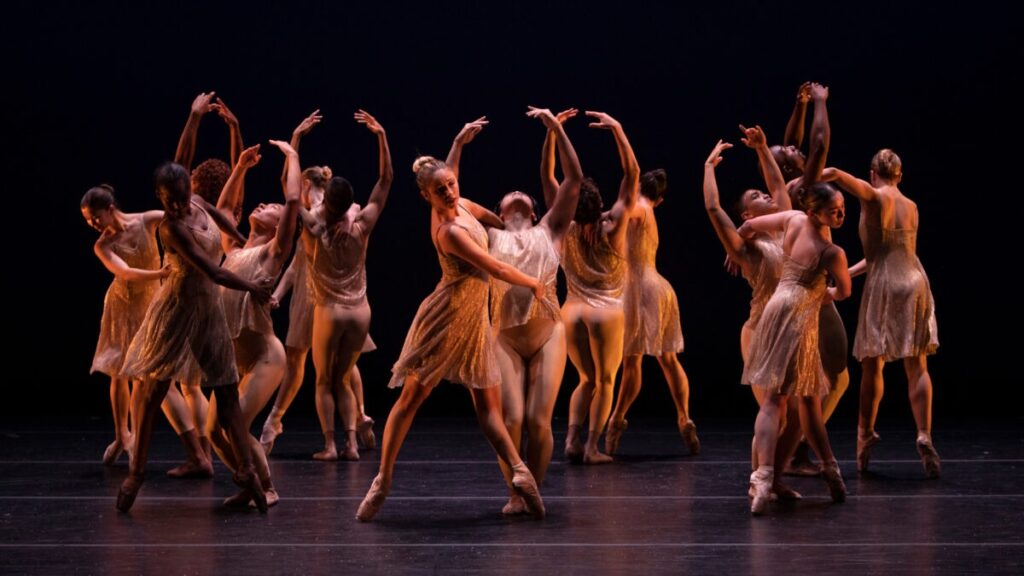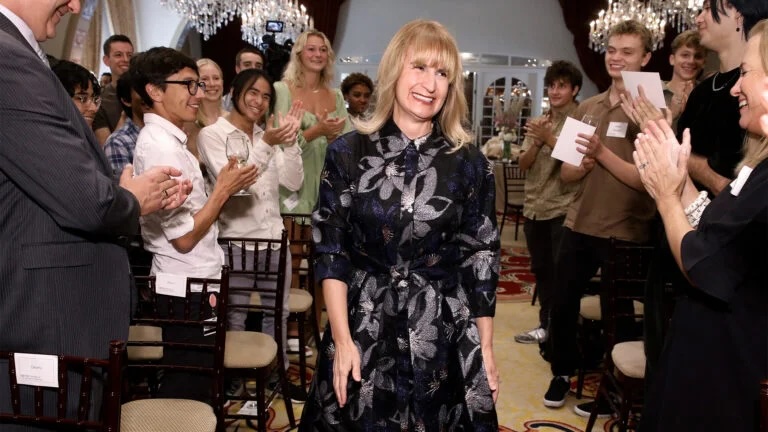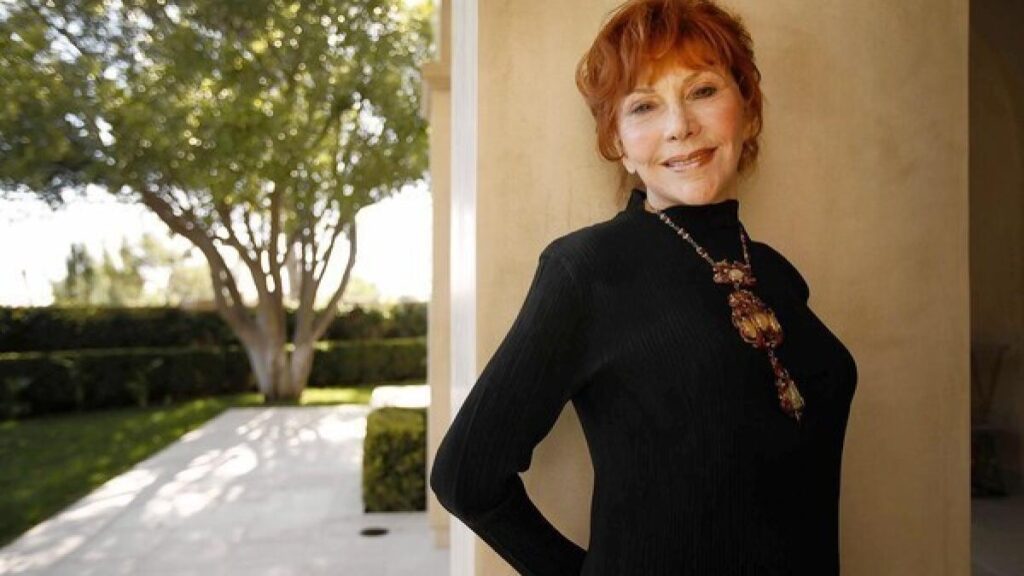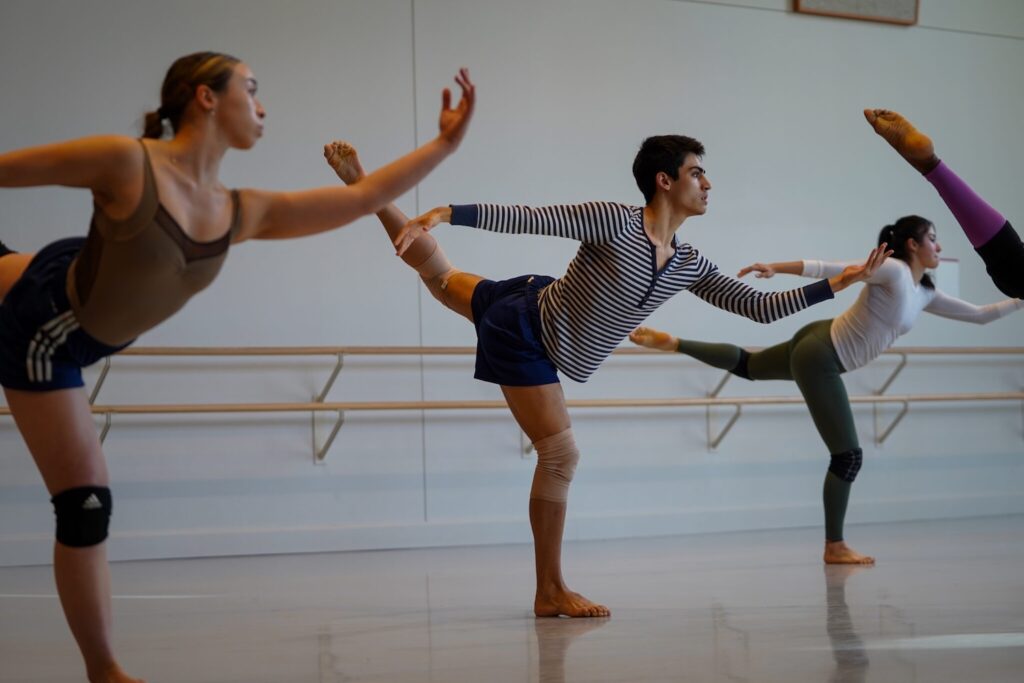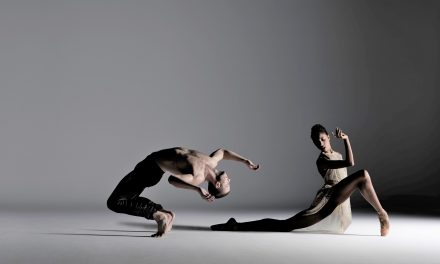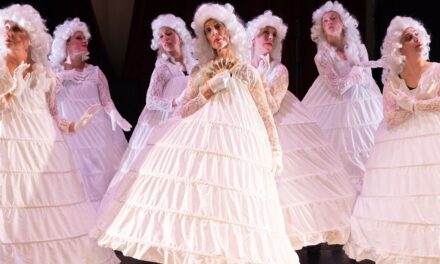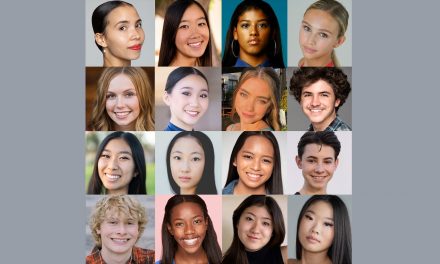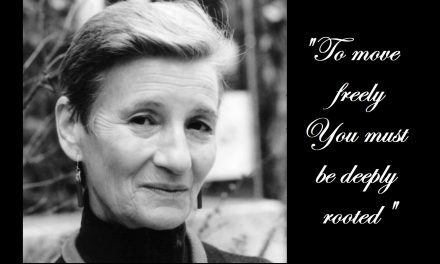If anyone doubted that Glorya Kaufman is the preeminent patron of dance in LA, they should just take a look around the city. Her name is on the dance building at UCLA, a performance center in Cheviot Hills, the Music Center dance series, and since 2015, the USC Glorya Kaufman School of Dance at the Glorya Kaufman International Dance Center.
On its tenth anniversary, USC Kaufman opens its doors on May 3 for its first gala, a star studded event that will honor its benefactress for her efforts on behalf of the world of dance and the success of what has become known as USC Kaufman. The gala committee is a Who’s Who of dance. The event’s host is director/producer/choreographer Kenny Ortega (High School Musical, and so much more). Performers include Emmy-award winner Wayne Brady with choreography by Tony Testa, Joffrey Ballet dancers and USC Kaufman alums Coco Alvarez-Mena and Zach Manske in choreography by Nicolas Blanc, and Ortega and Dorianna Sanchez’ reimagined finale from the film Dirty Dancing, (I’ve Had) The Time of My Life, set on USC Kaufman dancers.
For the event, choreographer Mandy Moore (La La Land) turned documentarian with a film about Kaufman. Asked if there were any surprises while making the documentary, Moore responded:
“What surprised me most about Glorya was her immense passion for dance as a transformative force for individuals and entire communities. She wasn’t simply interested in founding a dance school; she envisioned a space where artists could grow into leaders, shaping the world in a meaningful and positive way. The school of dance she created offers not only rigorous technical training, but also a strong liberal arts foundation, empowering students to become both versatile performers and visionary changemakers across industries.”
Who is the woman behind the largess? Although active during her marriage to Donald Bruce Kaufman (the “Kaufman” with Eli Broad in the enormously successful real estate development firm Kaufman and Broad), Glorya Kaufman and the Kaufman Foundation emerged as a philanthropic force after the death of her husband and son-in-law in an airplane accident. While it is her name prominently visible on many of her philanthropic projects, one of her first gifts established Brentwood’s Donald Bruce Kaufman library, honoring her husband and his love of books.
Over the years, amid many philanthropic efforts, dance has held sway.
Since 2004, UCLA’s World Arts and Cultures program has made its home in Glorya Kaufman Hall with two theaters, the larger one with 224 seats named for the Glorya Kaufman Dance Theater.
In 2009, the Music Center recognized her endowed gift to its dance programming, renaming the series Glorya Kaufman Presents Dance at the Music Center.
With dance and her other endeavors, keeping track of the philanthropist’s many accomplishments can get confusing. In Cheviot Hills, the grounds of the Vista Del Mar Center servicing children and youth is home to the Glorya Kaufman Performing Arts Center. In Culver City, the Glorya Kaufman Community Center is part of the Wende Museum, and in Hollywood, the Glorya Kaufman Hollywood Performing Arts Theater at the Hollywood Arts Collective.
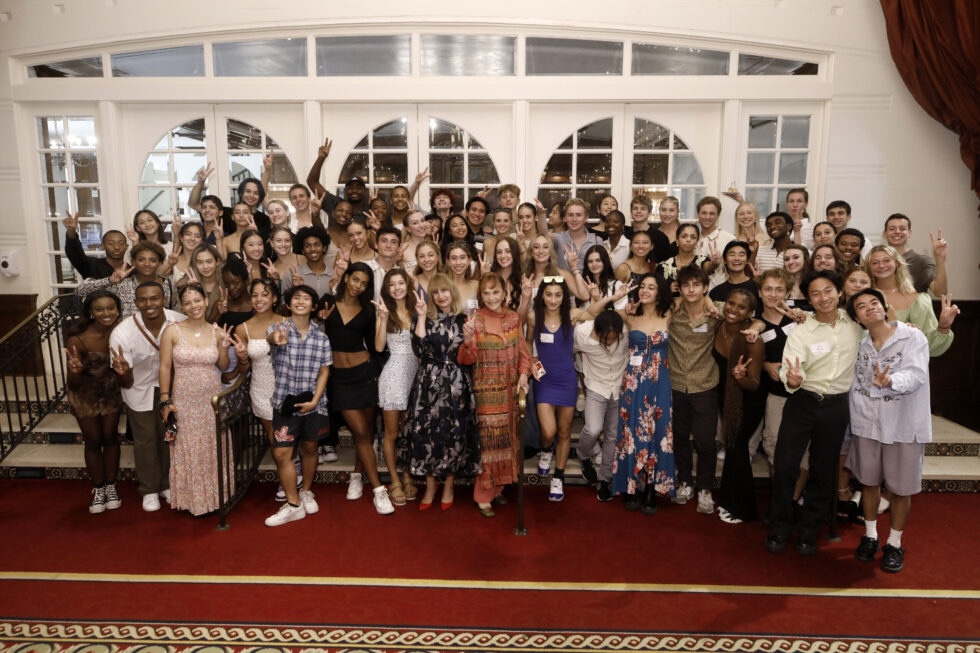
2022 installation of Dean Julia M. Ritter with Ritter and Glorya Kaufman in center of students – Photo by Steve Cohn.
This Saturday, the gala will focus on Kaufman’s efforts that led to the 2015 opening of the Glorya Kaufman School of Dance, USC’s first new department in 41 years. In 2022, Julia Ritter became Dean of USC Kaufman, bringing decades of dance experience as a teacher, scholar, and administrator, including director and artistic director of the dance department at Rutgers University from 2010 to 2021.
Dance writer Ann Haskins spoke with Dean Ritter about Glorya Kaufman’s involvement from its founding in 2012 until the doors opened in 2015, the school’s place in the LA dance landscape, and the plan for the school’s next ten years. The interview has been edited for space and clarity.
Haskins: Tell me what you’ve learned about the start in 2015. How big was that very first class?
Ritter: It was actually quite big, 33. I arrived in 2022, so I was not here at the beginning. The founding director, Jody Gates, and the founding faculty, really traveled widely and recruited across the country. They were expecting around 25, then they had 33 show up. I think they were very pleasantly surprised. In many ways, those dancers really took a chance, right? They took a chance to come to a brand new school that had no reputation whatsoever. The current class is 26, which is pretty consistent with the 25 to 30 we have had since that first year.
Haskins: How would you describe the school’s approach to dance training and where it fits into other institutions that exist in LA and Southern California?
Ritter: I think all dance programs in higher ed look at trends, things that are happening in the wider culture to evolve their curriculum. From the very beginning, what has made USC Kaufman different is the questions were how to create a program for professional dancers that drew on the incredible richness of the dance ecosystem of LA.
Another important aspect is that it was established as a stand-alone school and can be considered its own Conservatory of Dance within a larger Research One (R1) university. So, while the dancers are coming to become professional dancers, they get the added benefit of a liberal arts education in one of the major universities in the country. They love dance, but many of them will pursue minors or get a master’s degree. We have something at USC called a progressive degree, which is a master’s degree that you actually start studying for while you’re an undergraduate in your third or fourth year, and then you stay an additional year. Then you walk away with both an undergraduate and a master’s degree, and those master’s degrees exist in all the other disciplines. We had one student do their master’s degree in public policy, and another did a master’s degree in gerontology, because of their interest in working with dance and aging. That’s the terrain which makes us very different from other conservatories in the country, even in terms of some of the other universities with more emphasis on liberal arts. Also, what makes the training different is that original intent to engage with the outside dance world in LA. We have access to the very, very best in the business and draw upon them as guest artists and faculty. People who are choreographing mega tours and the movies, which provides a type of hybridity in the training with the commercial dance world alongside the concert dance world.
Haskins: Can you give some examples?
Ritter: Kyle Abraham, who has received a MacArthur Genius award, is currently on our faculty and making works for this proscenium stage. We also have Fiona Lummis Eddy on our staff who danced with Jiri Kylián’s Nederlands Dance Theater and created many of his beautiful, beautiful works. Fiona is a répétiteur, designated to set and rehearse Kylián’s work. Every year, almost every semester, she sets one of his works on the students. That’s the kind of access they’re having with the curriculum emphasis on cross training in multiple forms. The goal is to be literate in your ballet, in your jazz, in your breaking, in your hip hop, in all those forms, no matter what your previous training when you came into the school. The dancers come to us with all different levels and different kinds of training, and may be stronger in some areas than others, but while they’re here, they’re building up their skills across those multiple forms.
Haskins: An ongoing tension, especially in ballet, but also in some of the other contemporary dance forms, is the pressure or the temptation to go professional immediately, to join a company rather than attend a college or a conservatory. There is a line of thinking that if you only have so many years to dance, do you want to spend four of them getting a degree.
Ritter: We don’t encounter that too often. The dancers who want to come to Kaufman are some of the highest performers, but most aren’t really interested in getting into classical ballet companies. They do get into ballet companies, but more towards the contemporary end of ballet. Those interested in classical ballet, going into American Ballet Theatre or New York City Ballet or the like, those dancers have a very direct path, and are not interested in coming to Kaufman. Kaufman dancers really want this high caliber training, and they want to also be in an environment where they are pushed academically. We have ways in which we work with students who get professional opportunities. One dancer was in his third year and was offered a contract with the Ailey company. Luckily, he was very far ahead in his academics, so he could take a semester and go perform with Ailey, and then he came back and finished his senior year.
Haskins: Where have the graduates gone on to?
Ritter: I’ve been in academia, in dance, for over 25 years, and I’ve never seen such a robust process as I have at Kaufman for preparing students for a career and also tracking them. We have three people dedicated to our career services to prepare the students throughout their time here, including a showcase weekend in their senior year where we fly agents and directors and choreographers to our campus to see and meet our dancers. Then after graduation we also track them, mostly through social media. We also host events, including one online event every year for all of our alums that are in Europe or international.
Haskins: You came to USC Kaufman in 2022. Reading your biography, I saw Texas and Pennsylvania and New Jersey, nothing that looked like California in your background. What was it about this job in California?
Ritter: I had heard about Gloria’s vision for the school when it was founded and her true dedication over the years to creating this International Center for Dance. Throughout my time at Rutgers and other places. I’ve studied, I’ve performed, and I’ve taught, globally. The opportunity to be at a school that had regard and respect for international dance forms and global dance forms at its foundation, was really exciting to me. Gloria loves diversification. It’s incredibly exciting to put these different kinds of dance forms in conversation with each other, not just as physical forms to study, but having the students understand the origins of these forms and respect the histories, whether it is Bollywood or tap or dance hall or vernacular jazz. To learn about communities of practice where these forms have developed around the world, to me, that is the future of dance education.
Haskins: I understand part of the gala will focus on the school’s mission for the next 10 years.
Ritter: This is our first gala ever. Because we’re only 10 years old. In many ways, we are a baby school here at USC which was founded in 1880. It is our first Gala, and the first real shift in the evolution of the school. The first ten years were developing the curriculum, hiring people, getting through a pandemic, a lot of hurdles to jump over to make it to this 10 year mark. Fundraising was not really a big part of that, right. It was really just about the growth. And luckily, the school had the incredible support of Glorya in those first 10 years. Glorya is still supporting us, but now we started to make new relationships and new relationships based on the evolution of the school and the curriculum.
Haskins: In what ways?
Ritter: For example, you know, we have a curriculum now that is very focused on the intersection of dance and health. So there are courses that our students can take to start to learn how dance can be a modality to help individuals with Parkinson’s disease, individuals with autism, individuals with Down syndrome. And when you start to move into those realms, we want to bring specialists in, scientists as well those communities.
Haskins: In the area of Parkinson’s, for example, a number of local dance companies have long-established programs working with people with Parkinson’s. Is USC partnering with any of the existing programs?
Ritter: Yes. In addition to working directly with scientists over at USC Keck, the faculty director Patrick Corbin forged a relationship with Lineage Dance and their program Dancing With Parkinson’s. We also work with Free To Be Me in Culver City, an organization that provides dance to individuals with developmental and physical disabilities.
Haskins: Now that you have been here a few years, what is your impression of what you called the “LA dance ecosystem.”
Ritter: Well, I think one has to acknowledge there is this unique dynamic of being in Hollywood with television and film. Live concert performance does happen here but it is spread out. But what I found here was commercial and concert dance are not entirely binary. That, I think, is very refreshing. Here there are dancers who move freely between the concert world and the commercial world, and also choreographers who move freely among those worlds. I also find it refreshing that those individuals dedicated to making, quote, unquote, concert dance for the stage, are so open to the forms and the approaches and the pedagogical methodologies of individuals coming from the commercial world. You don’t always see that in other dance communities. I grew up near New York, and it is very much that concert dance is this, and then there’s this whole other commercial dance thing over there. Here, I feel there is much more mutual understanding. One of the biggest gifts that I’ve received from moving into this city and getting to know this community, is to see the ways in which people’s minds here are open. They receive the different practices of one another with real generosity and real respect, and that’s something I haven’t always witnessed in every other city.
USC Glorya Kaufman School of Dance – 10th Anniversary Gala at USC, Glorya Kaufman School of Dance, 849 W. 34th St., University Park; Sat., May 3, 5 pm reception, 6 pm performance, 8 pm dinner/dancing, $1,500-$7,000. USC Glorya Kaufman School of Dance 10th Anniversary Gala
Written by Ann Haskins for LA Dance Chronicle.
Featured image: USC Kaufman alum Celine Kiner – Photo courtesy of USC.


